We’ve all heard of the Big Five: the showcase wildlife of Africa and the highlight encounters of any safari. But what about the continent’s less attractive creatures: the warty, repellent and unsightly? There’s a club for them too – the Ugly Five – and we’re massive fans.
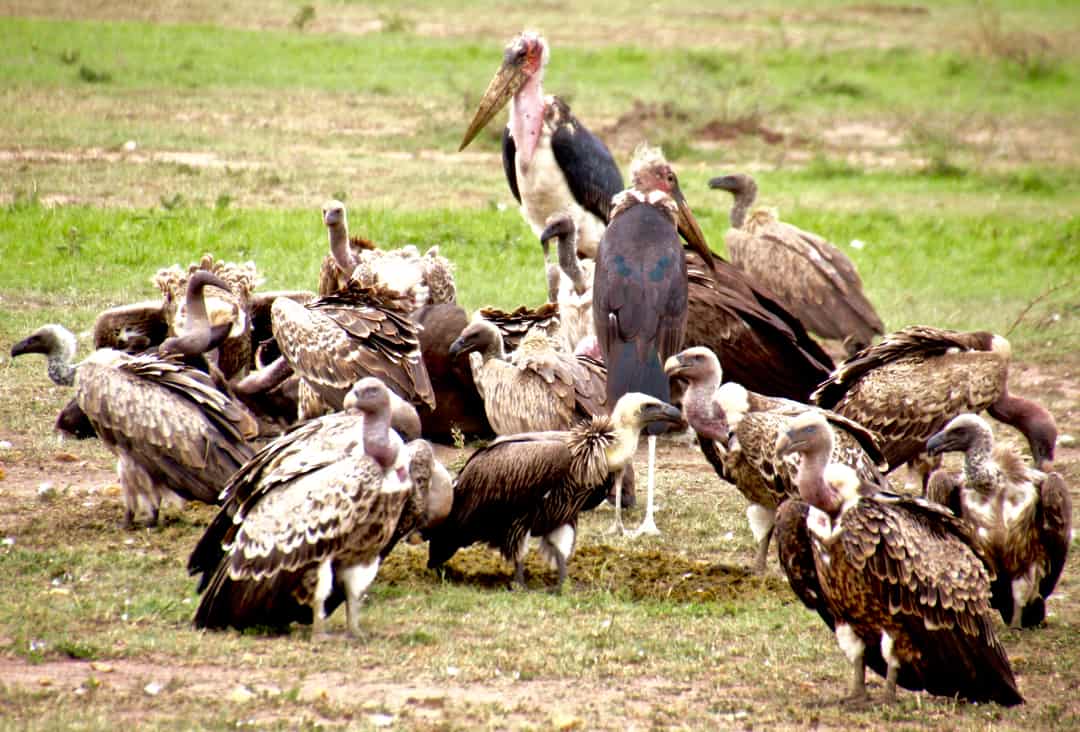
Nothing quite compares with the thrill of pulling up in a jeep as a sleek and powerful leopard pads silently out of the bush, its golden eyes focused intently on the grazing zebras ahead. Or waiting with baited breath as a young male elephant trumpets, flaps his ears, and play rushes your car.
Africa’s Big Five – leopards, elephants, lions, rhinos and buffalos – are without doubt the principal players on the safari cast list. For good reason too: they’re fearsome, formidable and unpredictable. Ironically, it’s these very traits that led to the title of Big Five: these were the creatures that hunters found the most challenging to track and kill.
Today, the term has been co-opted for promoting safaris instead, and every year, tens of thousands of people from around the world set out in jeeps and trucks for their own glimpse of Africa’s five ‘most impressive’ mammals.
But there’s another ensemble of animals on the safari playlist with a huge amount of character and personality, if not the most attractive features: the Ugly Five. And just like their noble counterparts, Africa’s Ugly Five have an indispensable role to play in the circle of life.
Just about every wildlife encounter on a safari is unforgettable. For us, though, this ragtag collection of birds and beasts left a particular mark.
We’re here to celebrate the Ugly Five of Africa’s wildlife. Meet the cast:
Wildebeest
Sure, with its long, boxy face, shaggy beard and front-heavy body, the wildebeest is no picture. These guys have some serious stamina though.
The wildebeest migration is one of the planet’s great annual wildlife events. It sees around 1.5 million wildebeest stampede a loop around Kenya’s Masai Mara and the Serengeti in Tanzania each year in search of greener pastures.
If they survive the croc-filled river crossings (which take place largely in July and August), they must endure the daily perils of being a prize meal for the region’s top predators. It’s a stressful life being a wildebeest, who cares if they’re ugly.
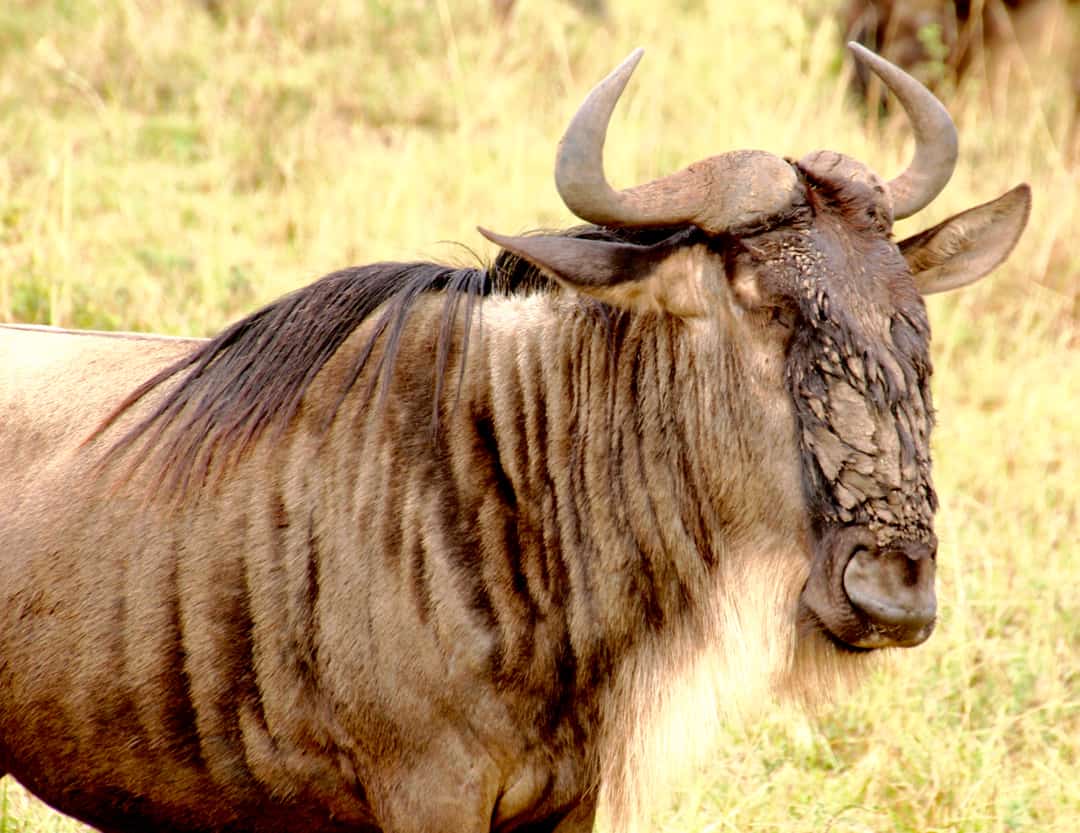
Maribou Storks
Poor old Maribou. It’s dark feather cloak, fluffy white ‘wig’, and habit of hanging around dead things have earned it the nickname, ‘the undertaker bird’.
Not that it does much to help its image: the maribou is a scavenger and will eat just about anything it can get into its long, pointed beak, even rancid carrion and trash from garbage cans.
Like other scavengers though, the maribou plays a critical role in cleaning up the environment. And with a wing-span of around 2.5-metres, these undertakers have some serious presence on the African plains.
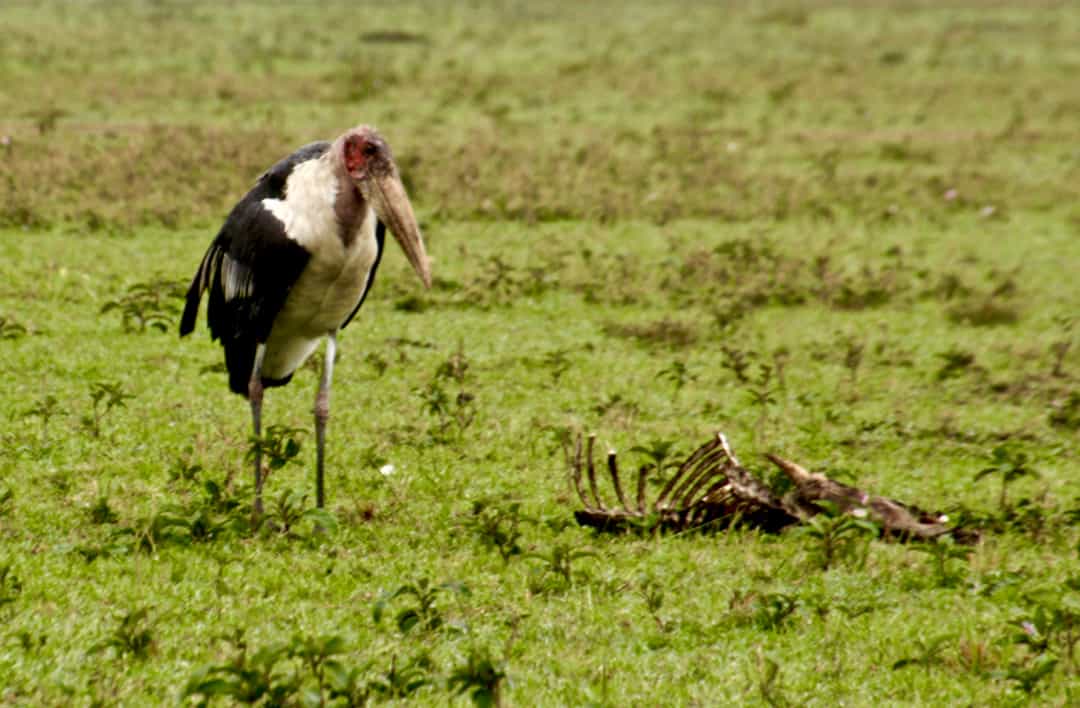
Warthogs
A bizarre face of lumps, bumps and tusks offset by a mane of ratty, tangled hair has pitched the warthog squarely into top place for the ugliest Ugly Five member.
Having an unpleasant visage hasn’t stopped these quirky creatures from being amazingly quick though: they can run at speeds of up to 50-kilometres an hour if they need to, a helpful skill when you’re on the menu of your wild neighbours.
Warthogs can also go months without water when the dry season saps their drinking sources. Fast and adaptable. Take that, Big Five.
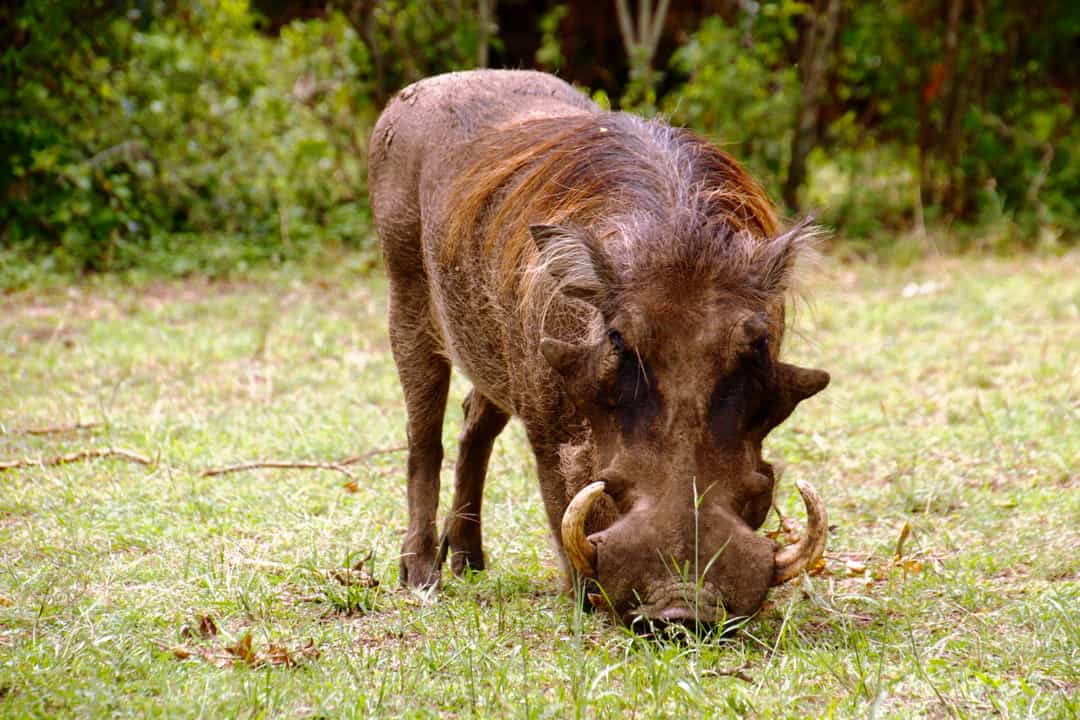
Vultures
The most famous of the avian scavengers, vultures have it tough. It’s not their fault they’ve biologically evolved to live on the flesh of dead animals. They have a precision sense of smell and excellent eyesight. Their featherless necks and heads are bio-designed for sifting carcasses with minimal mess.
Vultures are crucial for the health of the environment: they do the dirty work that keeps the landscape clean of carrion and limits the spread of disease. Look beyond their unsavoury day job, and you’ll find extraordinary birds.
Unfortunately, vultures are at risk around the world, with populations plummeting thanks to poisoning and changing food supplies. Growing the fan base of this maligned member of the Ugly Five is critical for its long-term survival.
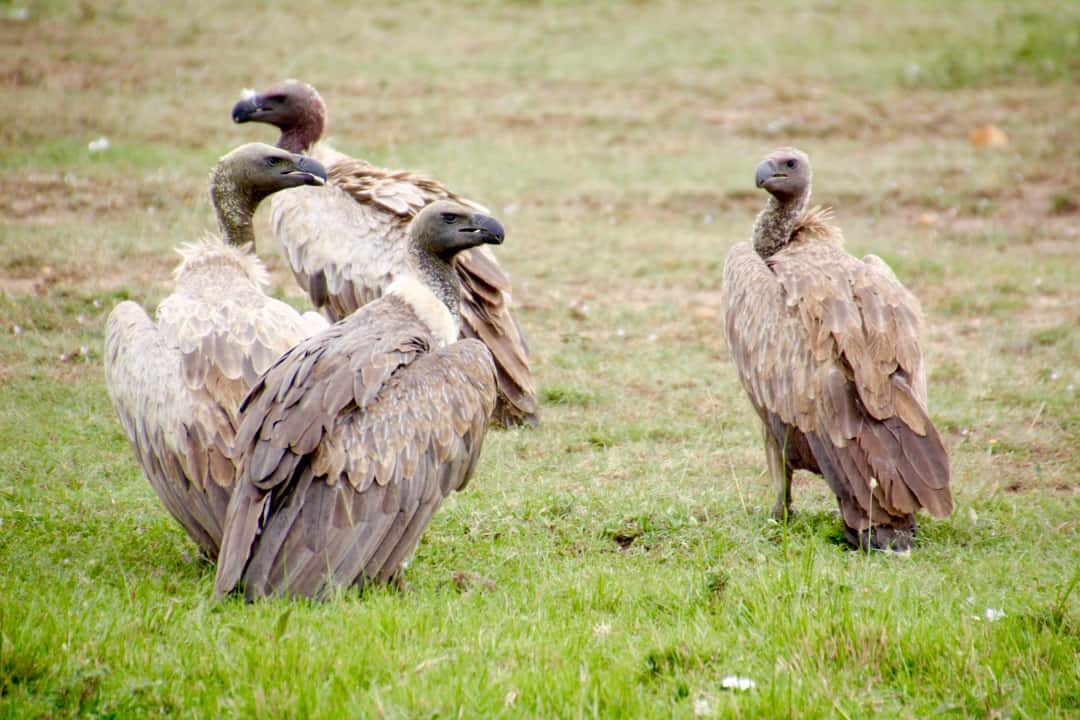
Hyenas
Last but not least, and our personal favourite of the Ugly Five, is the hyena. With its sloping back, stocky build, odd-looking face and spine-tingling laugh, the hyena is the brute of the ugly ensemble.
Both hunter and scavenger, hyenas are often portrayed as thieving and cowardly, yet they’re skilful hunters that will also take on a lion for a place at the table. The hyena’s bite is one of the most powerful in the animal kingdom, strong enough to crush bone.
And in the world of the spotted hyena, females are in charge; they’re bigger than the males and they even have a pseudo-penis through which they give birth, a quirk that may have given rise to the myth that hyenas are hermaphrodites.
If all of that doesn’t make them seriously cool animals, then check out their babies: they’re still the cutest cubs in the bush.
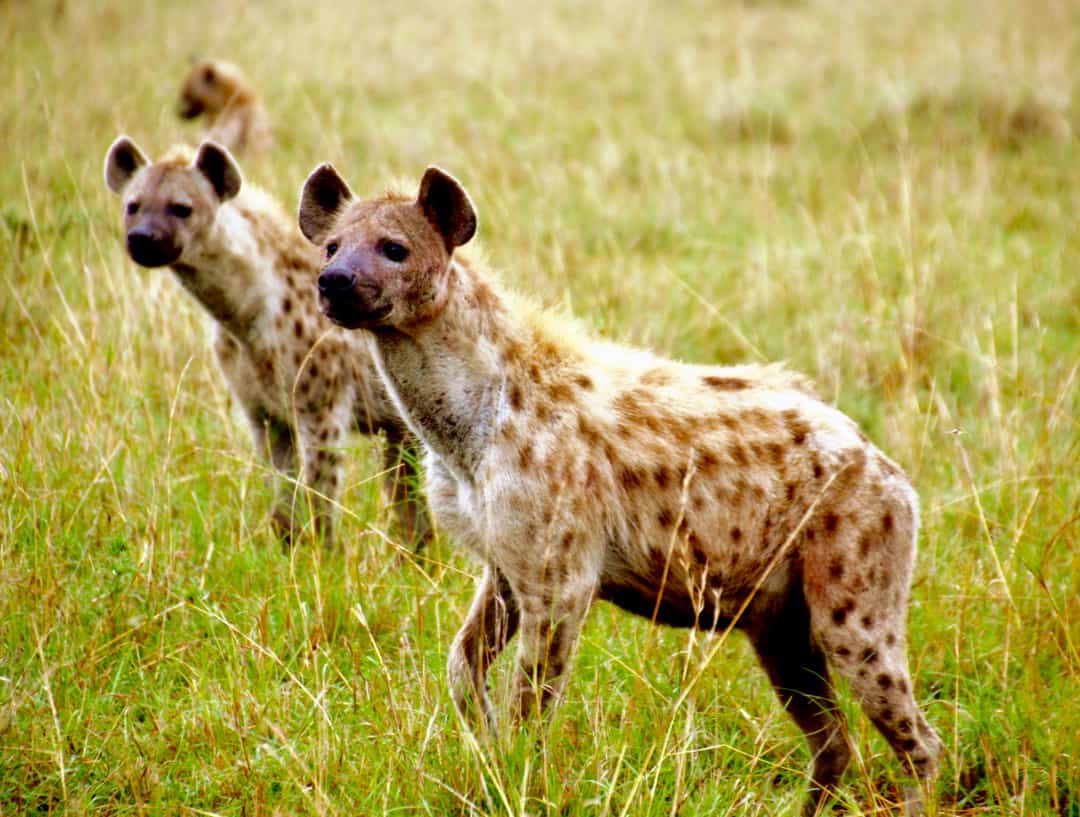
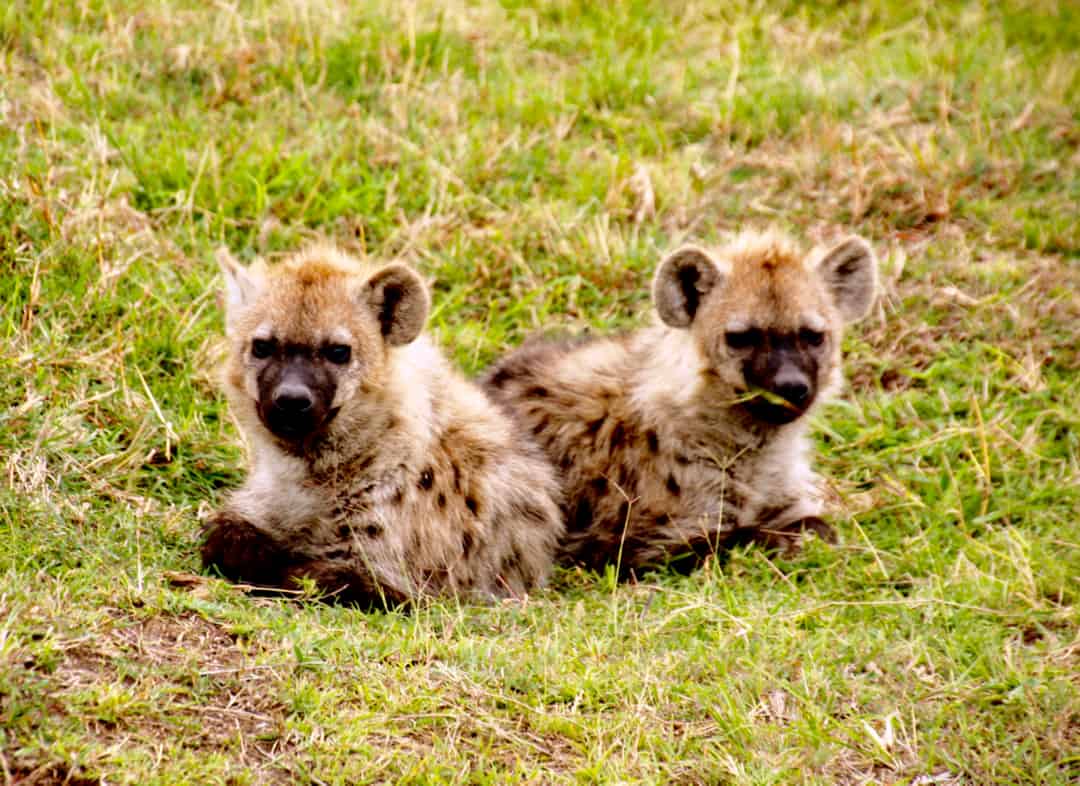
What do you think, would the Ugly Five make your safari checklist?
Where did we see the Ugly Five?
All of our encounters with the Ugly Five took place in Kenya and Uganda, first on tour with Intrepid Travel, and later during daily safaris into the Masai Mara from our independent stay at the lovely Aruba Mara Camp in Kenya.

Great topic for a post! Indeed these are ugly looking animals… Hate all of them 😉
Another interesting fact about the hyenas is that they have shorter back legs! But if you’re looking for ugliness in the animal kingdom, I think there’s an easy winner – check out: blob(fish)!
Thanks Eran, they are indeed an exceedingly ugly, yet somehow endearing bunch 🙂 We love Blobfish too!!